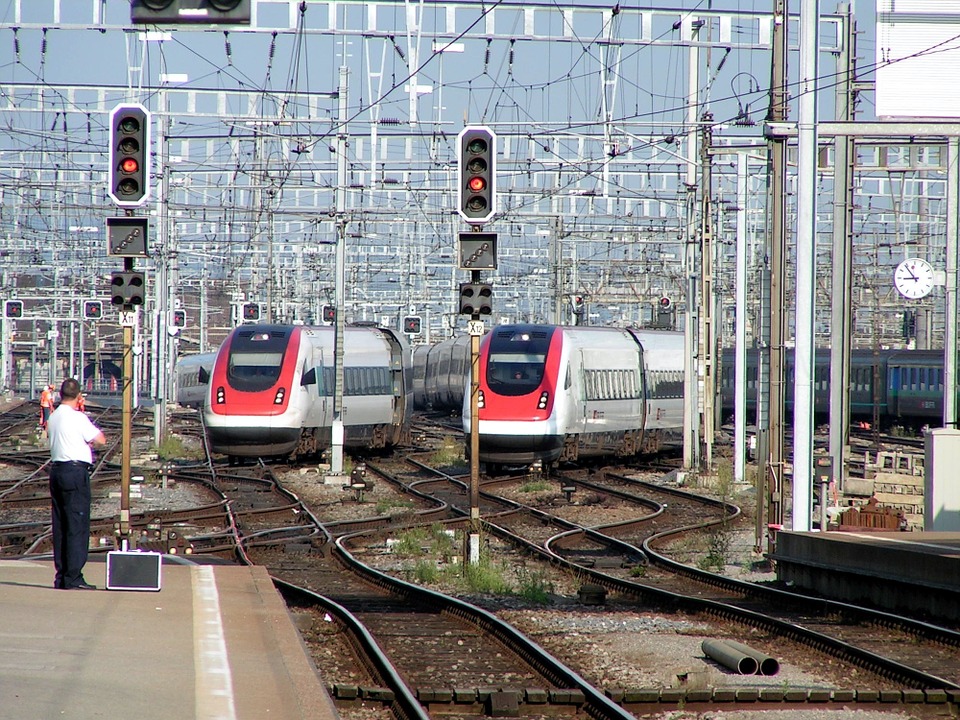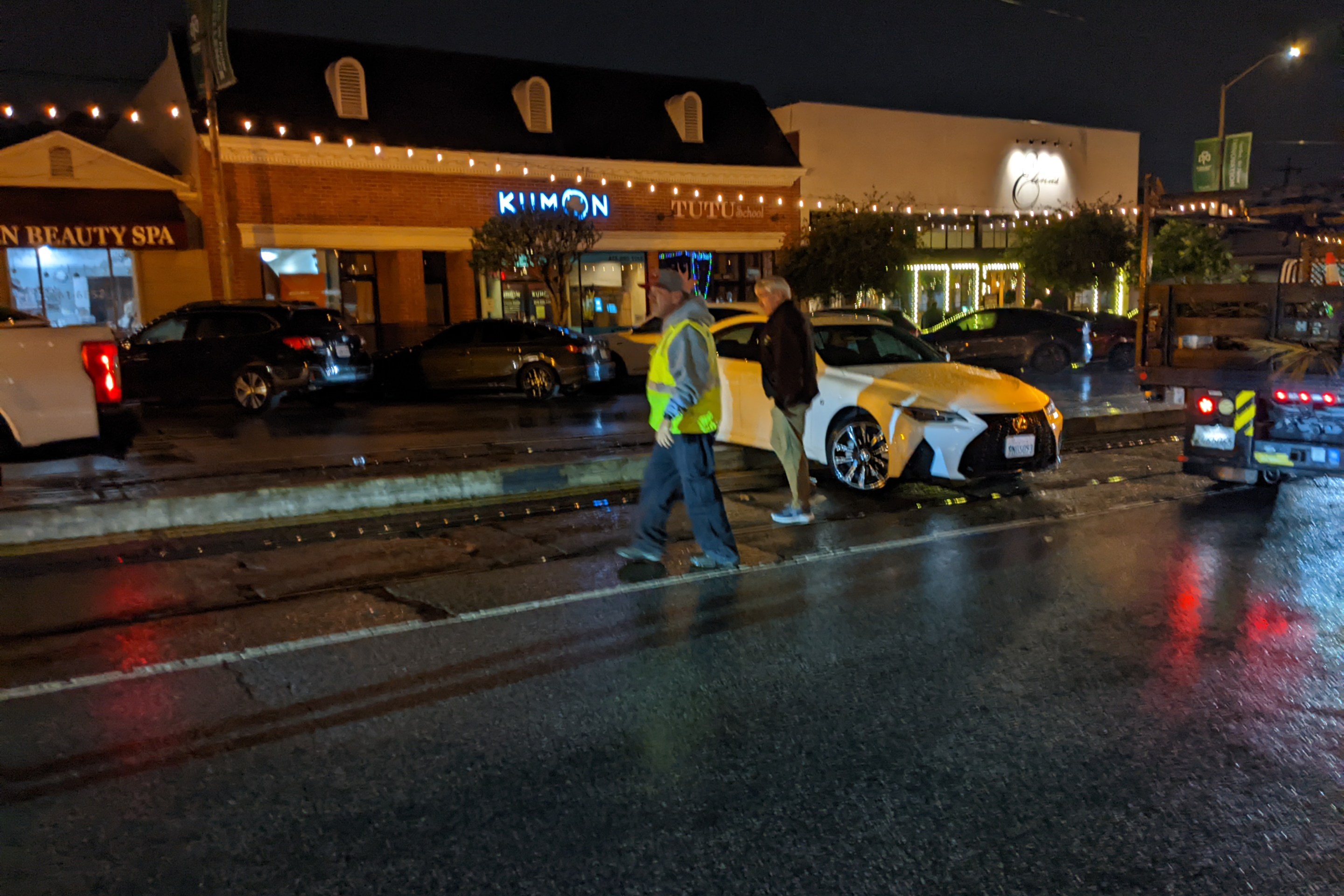Seamless Bay Area's Ian Griffiths just completed an extensive study tour of Switzerland's intercity rail and urban transit systems. Streetsblog wanted to bring his thoughts to readers.
A key success factor in Switzerland’s attractive, high-ridership system is the principle of "One journey, One ticket": the idea that when you pay a fare, it's for your entire journey, no matter how many times you transfer between modes or operators.
The study delegation of Bay Area transit leaders to Switzerland learned the details of how this works from Helmut Eichhorn, Managing Director of Alliance SwissPass, a mandatory association of operators and fare associations created by the federal government, and from representatives from ZVV, the regional fare association for the Zurich region.
The way this is done is more complex than I was expecting before I visited Switzerland, but the result for the end user is that you pay a 'fair' fare that is basically proportional to how far you go. And, there are major efforts underway to make it even simpler and fairer.
For example, if you wanted to take a trip from the city to the mountains, you might take a tram to a regional train to a ferry to a cable car, all of which would be included in the same ticket price. On the way back, if you chose to take a different combination of modes or routes, your journey would be the same price.
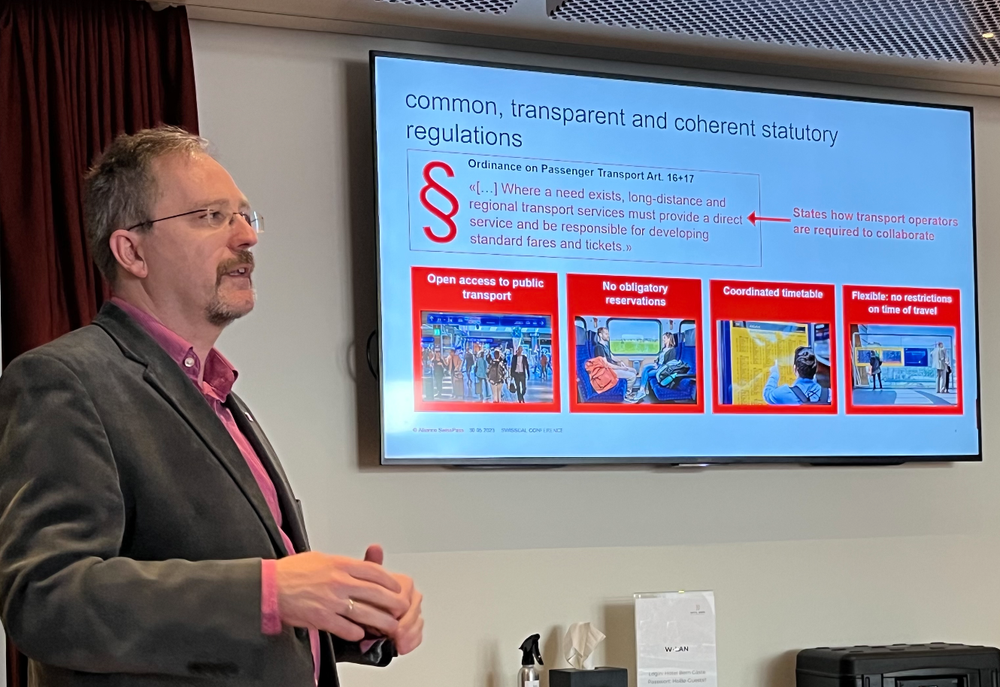
The federal government defines in law some requirements for all ticket sales nationwide:
- Open access to transit (no fare gates) - all transit is 'proof of payment' by law
- No obligatory reservations
- All tickets must be flexible and have no restrictions on time of travel
How do the Swiss make this work? Switzerland has been described as a “system of systems” – there’s both a nationwide fare structure for rail and bus, plus 18 regional fare associations, each with zone-based structures, where you pay for the number of zones you go through.
(The Swiss zone-based fare structure was an inspiration for Seamless Bay Area’s Fare Vision Map due to it’s logical structure and how it lends itself to a polycentric region like the Bay Area.)
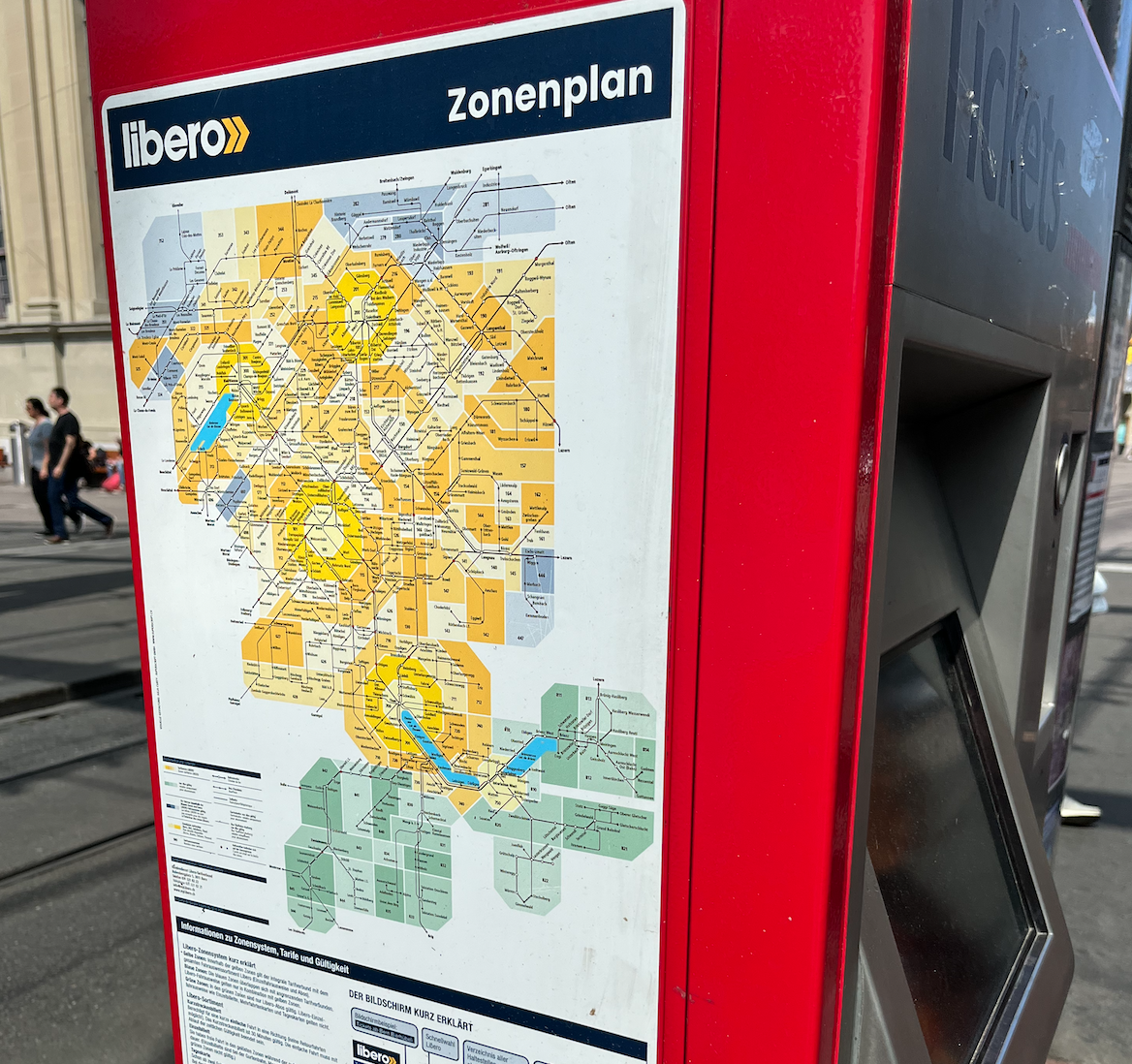
For trips between regions, Alliance SwissPass and SBB, the national rail agency, oversee a distance-based fare structure, which is applied instead of the region-based structure. Fares are distributed back to operators based on some complex formulas - but the rider doesn’t see the complexity.

Becoming a member of Alliance SwissPass, the national fare structure association, is a mandatory condition of receiving public funding. In other words, fare integration is not optional.
In addition to the national structure, a variety of special passes are offered within the 18 regions in Switzerland; for example, offers in the Bern region, with a population of about 1 million, include a single ticket, a one-day travel pass, or multiple journey tickets (at a slight discount). The Zurich region uniquely offers a 24-hour ticket.
Because of the lack of fare gates nationwide (mandated by law), many Swiss have embraced mobile ticketing; simply enter any origin & destination in the country on the SBB, VBB or other mobile app, purchase a ticket, and get a QR code.
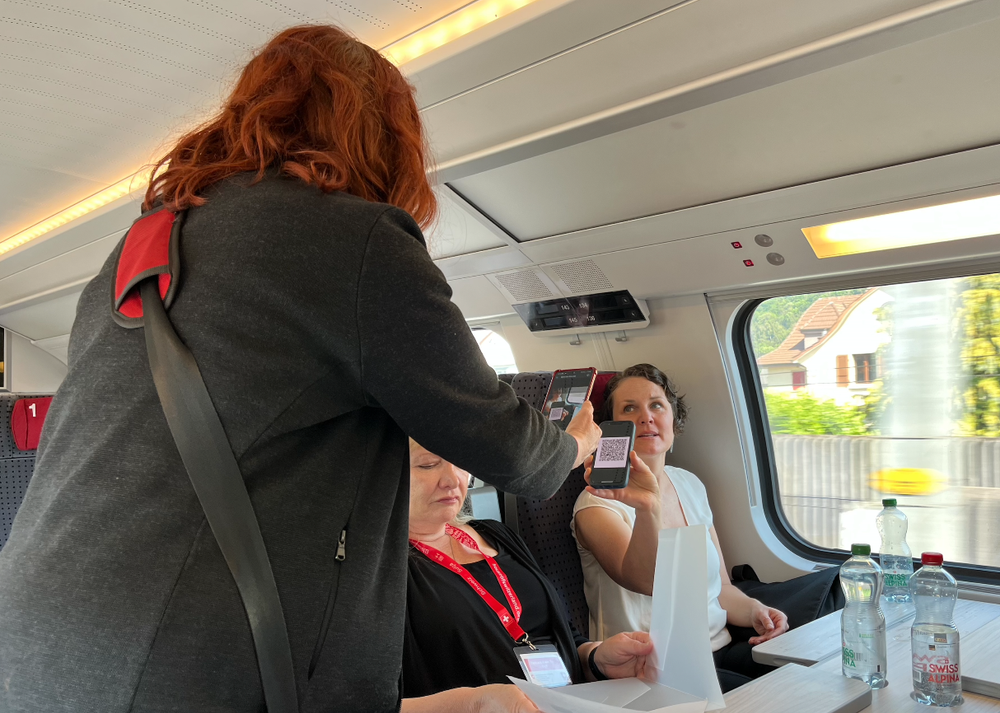
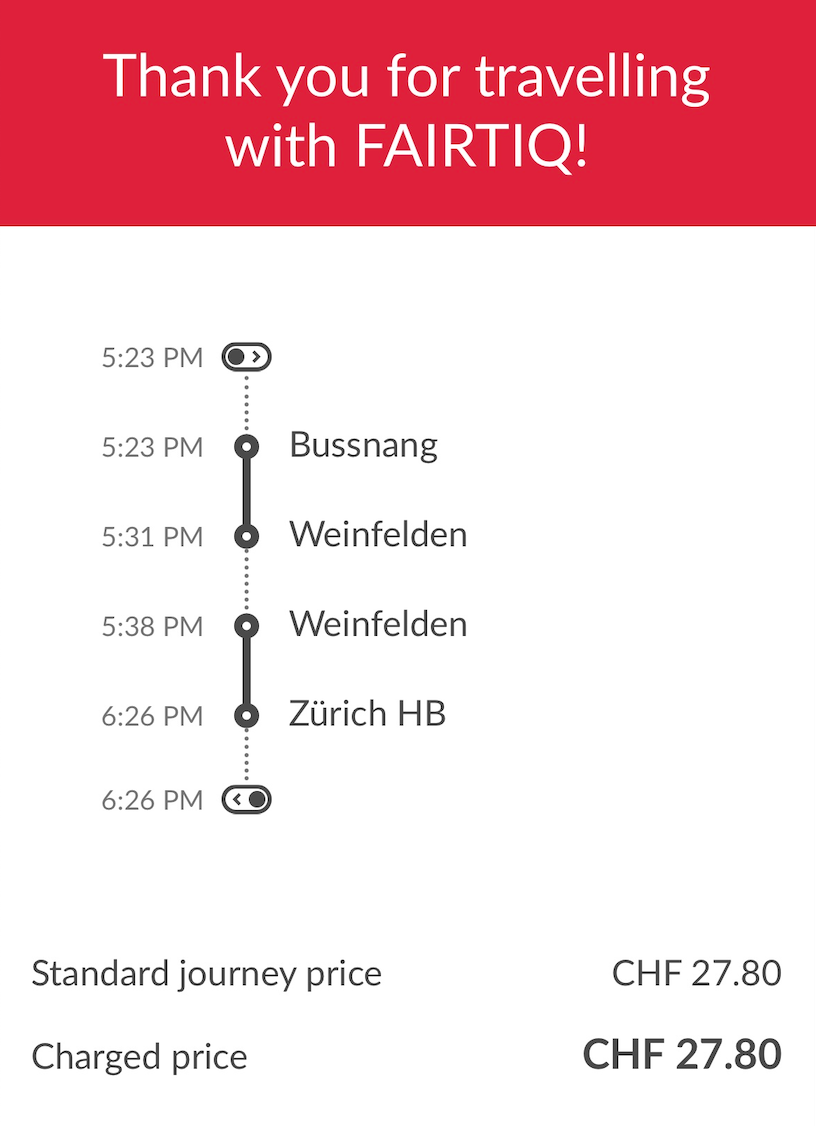
Most tickets are purchased as mobile tickets now instead of at machines. By law via Alliance SwissPass, all agencies must sell tickets for all other agencies in the nation - including on all apps. So any ticket is available from any point of sale.
An even simpler way of paying is via Fairtiq, a popular Swiss mobile ticketing app. A rider can open the app and then 'swipe right' to begin their journey and transfer freely bewteen modes. Then, a rider swipes left when their journey ends (or, the app will guess where the trip ended if they forget); then automatically, the app charges the best possible fare.
As shown in the screenshot, I tried out Fairtiq, and it correctly mapped my journey, including the transfer, and charged me the right fare, and gave me a satisfying diagram of my journey - just like Uber or Lyft would send me after a ridehail.
So, unlike the Bay Area, where the lack of any fare integration creates all sorts of inequities and disincentives to take transit, Switzerland has *a lot* of different levels of fare integration – between modes, and between regions.
Fares are basically 'fair', even if all the fare zones are sometimes a bit complex. Riders may not be able to predict exactly what the fare will be, but they trust in the system and know they will get charged approximately proportional to how far they’re going.
The federal government is now trying to simplify fares even more with a pilot program that would reconcile regional differences and shift even more to 'post-trip pricing'.
Finally, an important fare policy that drives ridership is the highly popular ‘half-fare’ travel card, which over 50 percent of the Swiss population chooses to purchase. The card, which costs CHF 165/year (US$182), provides a 50 percent discount on all transit trips during the year.
For many riders, the pass rapidly pays for itself, and acts as an incentive to ride transit throughout the year. Tourists are a significant market for transit and a variety of pass products are specifically marketed to them - but not the half-fare card, which is only for Swiss residents. (In fact a different 'half-fare card’ product is available to visitors, but it is much more expensive than the product available to Swiss residents)
In sum, my takeaways on Swiss fare policy are:
- Participation in integrated fare structures should be mandatory, not optional.
- Having a common ‘logic’ to fare integration that seems fair matters appears more than having a super simple structure. 'One ticket, one journey' is key. (That said, at the UITP conference I attended after the study tour, many panelists stressed that fare simplification can be an important and effective strategy for attracting new markets of riders)
- Integrated fares provides opportunities for common fare passes, like half price fare cards & tourist passes, which can be powerful incentives to use transit a lot – and generate significant revenue.
- The more ways to pay for transit, the better. Ticket machines, mobile ticketing, and Fairtiq all work well for different types of users.
***
A version of this post appeared on the Seamless Bay Area site.
